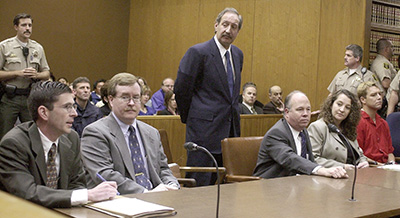
It was a case that became all consuming. "The courthouse was 20 minutes away from home, but we worked seven days a week, 12 to 14 hours a day," Steward recalls. "The judge sent the jury home at 5 p.m., but handled motions until 6 p.m. Fortunately, my wife is understanding."
The jury had a lot to consider. "There were 18 murders they had to look at. It was unrelenting, grim." Steward was forced to investigate all 18, to defend against conspiracy charges. The first murder occurred in 1979, but racketeering charges meant "there was no distinction whether my clients had actually committed the murder," or had allegedly ordered it.
Steward won the death penalty phase. The split vote - 9-3 for death - caused a mistrial, resulting in a life sentence. The hung jury was swayed by what Steward deemed the unfairness of putting one man to death, but sentencing another to a life term for murder. "One of the murderers (who was not a defendant in this trial) had cut a deal with the government, but the feds said our clients ordered the stabbing. But how can you put one man to death, and not the other, for the same murder?"
For Steward, the media attention was not as heavy as it was for Dubin. "There wasn’t much local coverage in the Los Angeles and Orange County media," Steward said. "The New York Times covered it more closely. But we didn’t have TV trucks or press conferences."
Why take on a case like this? "The challenge of taking on the federal government, with all its resources and power. And we beat the death penalty, which is really what we wanted to do," Steward says. "Putting my 30 years on the line and winning was extremely satisfying."
Witnessing the Prosecution
Like private attorneys, when the government prepares for a high-profile case, it also must prepare to focus despite the onslaught of public attention. Perhaps no other case has recently received more attention than the 2002 murder of Laci Peterson and her unborn child.
David Harris '86 was one of the Stanislaus County District Attorney's office lawyers assigned the case.
Laci Peterson disappeared on Dec. 24, 2002. She and her husband Scott Peterson were expecting their first child, a boy to be named Conner. Her disappearance immediately caught the media’s attention and in April, the body of an unborn child and a badly decomposed woman were found in San Francisco Bay, about 90 miles from the Peterson home in Modesto, Calif.
The Stanislaus County D.A.'s office charged Laci's husband Scott with murder. Harris was an integral part of the team that handled the case.